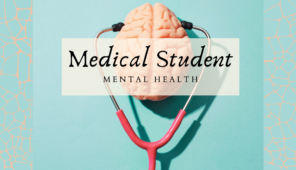A-Level U-turn: What does it mean for the future diversity of the NHS?
The A-Levels marking system has always been contentious. But now, it threatens to exclude disadvantaged students. How will this affect NHS diversity?

In light of the government U-turn on A-level results, universities up and down the country have been left to face unparalleled situations whilst students have been left in limbo. Continual changing of the process used to assess final A-level grades has led to an increased volume of students meeting their conditional offers. As a result, tens of thousands of students are now scrambling to secure places that would normally be in clearing. This is despite the choice to scrap algorithm generated grades in favour of centre-assessed grades (CAGs) submitted by teachers’ in the weeks prior.
While this is a common struggle amongst all university courses, those applying for healthcare subjects are confronted with a uniquely worrying situation.
The A-Level U-turn and Medicine
Medicine in particular is known for its incredibly rigorous and competitive admissions process. And unlike the majority of university courses, the number of places are tightly restricted by the British government.

The shift from the algorithm to teacher estimated grades has enabled many students to now meet their offers. Thus resulting in a vast number of students being eligible for admission. This comes after many (if not all) students were already admitted.
With entry numbers already largely filled for 2020 entry, vice-chancellors have warned it may not be possible to honour all of the original offers sent out prior to the U-turn.
As the MSC highlighted their statement, limitations on entry numbers mean that many able students will be unable to progress to university this year. While the facilitation of additional places is unlikely, failure to find an equitable solution means further issues may lie ahead. This holds particularly true when it comes to the subject of diversity.

Top-Down Discrimination
To understand the wider impacts of the government U-turn on diversity within the NHS, we need to be aware how the algorithm should have worked.
In an attempt to mitigate the possibility of grade inflation, CAGs were standardised based on past school performance. Schools with class sizes fewer than 15 were able to use teachers’ personal judgement in the place of the algorithm. Those larger than 15 were subjected to the algorithm.
Class sizes in state comprehensives are known to be larger as they do not select their intake on the basis of academic aptitude and/or the ability to pay school fees. This becomes perhaps even more striking when we consider that 80% of medical students come from only 20% of schools in the U.K, most of which are independent.
This predictably changed grade outcomes, disproportionately affecting pupils from lower socioeconomic backgrounds. Despite the original fault having been rectified, the algorithm has already left its mark on the H.E admission framework.
The algorithm’s bias for calculating grades helped in creating a socio-economic imbalance in this year’s intake for higher education. Whether ‘mutant’ or not, the fact remains that the government discriminated against candidates from deprived backgrounds. Ofqual subsequently apologised for the undue stress placed on students and institutions.
This issue of diversity however is currently confined to this year’s new med student cohort. But it is an issue that has the potential to influence the future of the medico-political landscape. So, what impact will the U-turn have on the organisational diversity of the NHS as a whole?

It was a bright cold day in August, and the clocks were striking thirteen…
Whilst we should appreciate the government’s genuine attempts to maintain the integrity of exam results, it is clear that the algorithm stripped students of their grades in this Orwellian style misfire. It bears so much resemblance to Orwell in fact, that one of last year’s receivers of an Orwell youth prize senior award Jessica Johnson, imagined a system in which biased algorithm results dictated young people’s futures.
A link to her story ‘A Band Apart’ can be found here.

Access & Inclusion: What’s the big Difference?
While some student led initiatives and independent organisations are transforming access to higher education, it should be noted that access does not necessarily translate to inclusion. This can be no more evidently seen than in the mounting pressure that is currently facing medical schools.
As mentioned, this year’s intake for medicine has already been selected. But with many students forced to defer entry, it suggests a worrying shift in perceived discrimination.

Prospective students often self-discriminate against their own application. Even in state schools, there is evidence of hierarchy amongst their own students which is a system perpetuated by the school in the way they choose to group students. Some colleges and sixth forms have Oxbridge or equivalent classes that creates discrepancies in the perceived abilities of students.
In doing so, pupils feel additional pressure to self-eliminate from certain subjects and university choices, because of where they fall in the pecking order.
Widening Access to Medicine
Students from lower socioeconomic backgrounds have been massively under-represented in medical schools for a long time. This is something that cannot be explained by lower academic achievement alone.
A similar thing can be said for those at the top of all professions in the UK. Back in 2016, the Sutton Trust published a report on the educational backgrounds of the UK’s professional elite. It revealed that 61% of those in medicine were privately educated. This again emphasising their staying power at the top of the professional hierarchy.
While this is likely to have improved in the past few years, the A-level U-turn has likely widened this gap – nearly 40% of A-level results were downgraded. To make matters worse, the delay in repeal has meant that even students on access courses have been left out of the system.

This is something I can empathise with, having participated in both the Leeds access programme and the Social Mobility Foundation. Without these, it is unlikely I would’ve gained the work experience and connections necessary to have a chance at applying for med school.
How the A-Level U-turn is Affecting Current Students
As mentioned, the effects of Covid-19 has placed emphasis on the underlying structural inequalities that are present within society. Systemic racism in the NHS was highlighted first through the COVID pandemic, later being rekindled by BLM protests. Now, the A-Level U-turn has brought attention to the bias high achieving young people from underprivileged backgrounds experience.

Diversity is once more an issue on the minds of prospective students, with ‘imposter syndrome’ more prevalent than ever.
This opinion is also shared by current medical students. I reached out to other students involved with inclusion and diversity at their own institutions. They explained how the medical student populace feels about diversity and why it is important to them:
HYMS:
->’The best way we can attempt to overcome health inequity is if the diversity of healthcare professionals were representative of the patients they care for’
-Co-lead for Students fair health group, Hull-York School of Medicine
Leeds:
-> Diversity in some instances feels more about quotas and statistics rather than actual inclusion.
-Equality & Inclusion Rep, University of Leeds

Gambling the future of the NHS
The issues surrounding diversity will have lasting effects in the healthcare community. The medical students of today are the doctors of tomorrow. Failure to recognise this risks the creation of an environment hostile towards people of minority ethnic and other disadvantaged backgrounds. It instead encourages an incongruence between what is voiced – fair treatment of all, irrespective of socioeconomic circumstance – and the behaviour of individuals within the profession.
The U.K is a net importer of doctors and the NHS is known for its diversity. But this doesn’t mean there is no discrimination present.
Unconscious bias is still present in our health service, this is something that is taught in modern medical curriculums. But preventing bias at the point of entry to the profession should be a responsibility all healthcare workers should bear.
It is important for staff and patients to build a strong sense of identity when communicating about their health. We must therefore open communication channels between universities, government and students to encourage diversity within the sector.

Searching for Answers
It has been several weeks since the decision to repeal A-level grades, but despite how well universities and students alike have handled the situation, there are legitimate concerns still unattended to.
However the solution to this multifaceted problem is admittedly widely complex. As Dr Zara Aziz writes in The Guardian:
“Our aim should always be to have competent and empathetic doctors from different social and cultural backgrounds who reflect our society.
One way of improving diversity is by having doctors from EU and non-EU countries as well, but we still need to increase access to the professions within the UK to young people from all social backgrounds.”
The full article can be read here.
Breaking Convention
Navigating this barrier to a career into medicine is perhaps the most profound challenge prospective students face to date. Particularly when we consider that it is out of their or indeed our control. Individuals should be provided with the support framework necessary to provide equal access to higher education.
There are already fears the U-turn on A-level results will create problems for years to come. If we don’t act now, its effects could well extend beyond this generation.
The discrimination of socioeconomically underrepresented students has been made crystal clear by the A-level U-turn fiasco. However, through championing social mobility and widening participation, we can stand a chance in providing medical education to the very best of us. So, for now, our mission should be to empower any and every aspiring medic with the tools they need to reach medical school.
And hopefully one day, we will be able to ensure equal opportunity for all, regardless of post-code.
What do you think we can do to help improve the diversity within healthcare? We’d love to hear from you! Contact us here.
Alexander Thornton
Latest posts by Alexander Thornton (see all)
- A-Level U-turn: What does it mean for the future diversity of the NHS? - 3rd October 2020
- Fake News: How to combat the COVID-19 Infodemic - 17th August 2020



